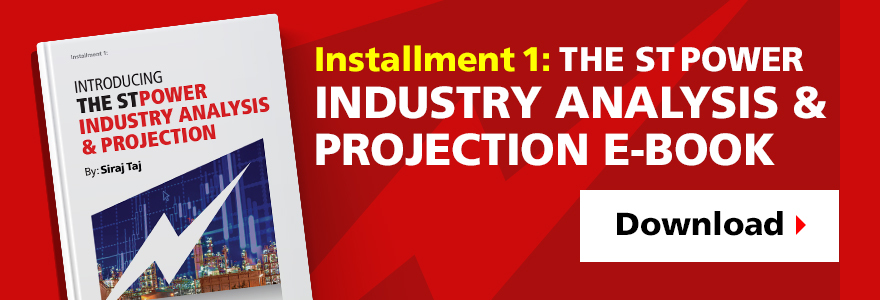In a sea of unknowns, a well-defined APM strategy is the kind of stability your power plant can leverage for more predictable performance. The Power Generation sector, particularly thermal generation, faces shifting market dynamics and disruptions directly impacting their operating model.
Background
Market fundamentals, i.e. fuel prices, transitioning workforce, ageing technologies, growth in renewable capacity, limited O&M budget and other factors have forced plant owners to consider non-traditional means to remain competitive and profitable. Studies suggest that alongside external factors, owners are challenged to resolve critical internal factors – lack of asset level predictability, shrinking experienced workforce, unplanned downtime with costly repairs, unnecessary preventive maintenance that is not based on risk assessment, etc.
It would be unreasonable for owners to expect the impact of either external or internal factors would dramatically change for better, anytime soon. With so many factors outside the plant owner’s control, the negative impact internal and external factors will inevitably have on power plants is at best a moving target. What plant owners can control however; is the reliability, and efficiency of clean power generating assets under their roof. Focusing on these more predictable plant aspects will allow plant owners to remain competitive and profitable. Applying a data driven strategy will promote optimum asset performance, while creating substantial value for investors as well.
APM Strategy
APM brings together Operations and Maintenance with real time information to provide a comprehensive view of asset performance. This integration increases cross-functional visibility, collaboration, and communication for high reliability, availability, and improved operational efficiency.
When it comes to developing an APM strategy, we suggest a pragmatic approach to determine an essential, and cost-effective application of APM methodology to derive maximum asset value. Our suggested approach consists of;
- An asset health assessment: The purpose of this comprehensive health assessment, based on 5-year O&M data, is to determine the Asset Health Index (AHI) to establish a baseline of asset health. Alongside overall AHI, it assists in identifying weaker (unhealthy) components, i.e. plant instruments, seals, electrical or mechanical equipment, etc. that could adversely affect total asset performance.
- O&M assessment: The purpose of comprehensive O&M assessment is to determine the strength of the O&M team, O&M strategy, Technical and Commercial risk assessment, operating model, and market assessment.
- APM solution: Based on asset health assessment and O&M assessment, outline a pragmatic, cost-effective, and data driven solution to derive maximum asset value with high reliability, availability, and improved operational efficiency.
Asset Manager
Along with APM tools, plant owners would get significantly more value from their APM strategy by appointing a strong asset manager to oversee both operational and commercial processes. Typical duties would include;
- Taking ownership of the APM process and enforcing strict compliance by the O&M team
- Developing strong marketing strategies to maximize the plant capacity factor by offering ancillary products and services
- Negotiating long term fuel supply agreements
- Developing and implementing a strong O&M strategy to deliver maximum reliability, availability, and profitability, while reducing costs
- Negotiating Long Term Service Agreements (LTSAs) to efficiently maintain power generating assets and reduce downtime
- Administer insurance policies and closely monitor compliance with insurance requirements
- Mange legal and public affairs including investor relations
- Have complete P&L responsibility of the power plant
- Issue a monthly operational and financial report outlining asset performance, including an analysis of actual versus forecast
- Manage compliance with regulatory requirements, submit all required reports to the appropriate authorities, respond to official inquiries, and maintain compliance records
APM Benefits
Recent studies suggest the power industry collects less than 2% of the potential data generated by a typical power plant. APM connects disparate data sources and uses advanced analytics to turn that data into actionable information.
APM tools utilize readily available asset information to analyze asset performance, and create solutions that improve asset reliability and availability, while preventing unplanned breakdown through condition monitoring. APM also enables O&M teams to create an informed maintenance program, thereby allowing condition monitoring to predict the likelihood of equipment failure.
The predictive maintenance approach is in stark contrast to the preventative maintenance approach because the latter assumes a failure pattern that increases with equipment age and use. This is true for about 20% of the assets while 80% display a random failure pattern.
APM facilitates information sharing among operations teams and maintenance teams with a comprehensive view of energy production and asset performance. It increases cross-functional visibility, and collaboration and communication for improved productivity, reliability, safety, quality, and ROI.


